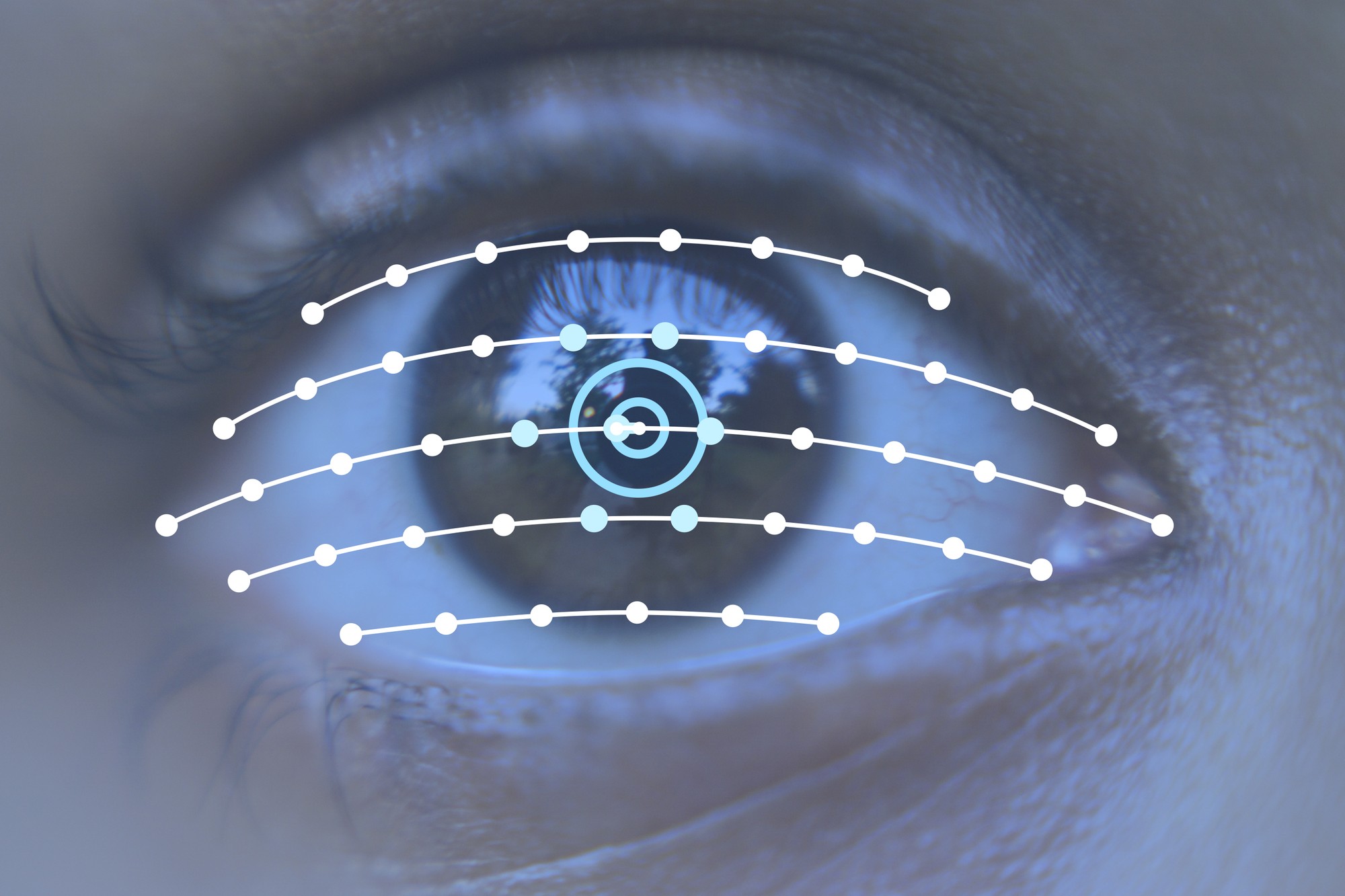Eye-tracking tech peers into future of psychology, privacy concerns

(Harishwer Balasubramani/Daily Bruin)
The slightest movement of an eye or dilation of the pupil can reveal the thought processes of a person’s brain – even an infant’s.
Researchers across UCLA are using eye-tracking technology to track eye positions and eye movement. The data researchers gather from the technology can be used to study human behavior.
“Eyes are the most important organ to correlate with brain activity,” said Yi-kai Lo, a postdoctoral bioengineering researcher.
Lo is using eye-tracking technology to develop a more personalized education system. In his research, Lo is tracking students’ eye movements as they try to solve math and science problems on a screen. Then, he compares the data he gathers from their eye movements to students’ electroencephalogram, or EEG, data – the electrical wave patterns from their brains. With this information, Lo said he is able to see what parts of problems the students dwell on.
“Eye tracking is a very useful tool to assess mental focus noninvasively,” Lo said.
Still, there are margins of error involved in using eye-tracking technology in the lab. For example, glances to the side may not always reflect a breach in a student’s concentration, Lo said. Additionally, head movements can alter the way sensors perceive eye movement.
Another researcher, Scott Johnson, a psychology professor and director of the UCLA Baby Lab, is using eye-tracking technology to study babies by showing them pictures and videos and recording what they gaze at.
“Babies are preverbal,” Johnson said. “They don’t indicate what’s on their minds, so we take advantage of their tendencies to look.”
The Baby Lab uses the latest eye-tracking technology, said Bryan Nguyen, the lab’s technician. Cameras capture the reflection of infrared LED illumination off each pupil every two milliseconds and record subtle shifts of the eyes while infants watch stimuli on flat panel televisions. Though a data file of eye coordinates only contains text, it is about 20 megabytes.
“The old-school way to tell an infant’s looking preference was to use a piece of paper with two pictures and a hole in the middle,” Nguyen said. “The researcher would hide behind the paper and peak through a hole, determine where the baby is looking, and use a stopwatch to time how long the baby looks.”

Eye tracking eliminated the guesswork, Nguyen said. With the technology, Johnson has obtained some results that challenge accepted theories in developmental psychology.
Babies are thought to direct their attention to faces, which is part of an innate biological preparedness for social interactions, Johnson said. Using eye tracking and clips from the animated television special “A Charlie Brown Christmas,” researchers found that 3-month-olds focus on color, brightness and motion. Between 3 and 9 months of age, infants gradually focus their attention on the faces amongst the complex scenes, Johnson said.
With eye tracking, researchers hope to carefully characterize developmental processes and, eventually, know what to do when a child goes off the typical trajectory, Johnson said.
One goal is to identify early risk factors and to follow emerging signs of autism, Johnson said.
[Related: UCLA researchers look to expand autism knowledge through lens of diversity]
“Only eye tracking can inform theories of social development,” Johnson said.
However, the ability to assess eye-tracking data can be abused as well, said John Villasenor, engineering and public policy professor.
Because eye-tracking data can reveal where and how consumers focus on website ads, there are privacy concerns over its distribution to advertising companies. For example, the mobile marketing network, which is a platform for corporations to collect digital data from mobile devices such as Google searches and GPS signals, will soon be able to track eye movements and dilations as well.
[Related: UCLA center hosts event on social impact of digital technology]
Villasenor said he thinks tracking which ads consumers focus on can be just as intrusive as having access to their thoughts. Information about consumers could be collected without consent from the cameras in phones and tablets. This information can be analyzed and resold to other companies, he added.
Google, which sells its user data to fund its free services, has recently bought the eye-tracking startup company EyeFluence to use eye movements to navigate screens and make selections, like a computer mouse.
Although an individual’s eye-tracking data collected by companies would be anonymous in theory, the data could be tied to the devices they come from. The companies can then pinpoint the location of a specific home or building, Villasenor said.
“The amount of information that is routinely collected about everyone these days is enormous,” Villasenor said. “The resulting privacy concerns are of course well-recognized.”


